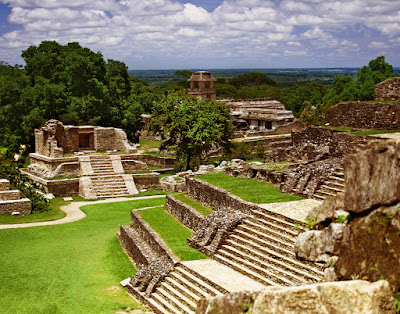Several of the skeletons of willing sacrificial victims.
More than a hundred skeletons believed to be remains of victims of a ritual mass sacrifice have been discovered in a pit next to the ancient Huaca Las Ventanas pyramid in northern Peru. The pyramid is part of the pre-Incan Sicán site, the capital of the Lambayeque people—also known as the Sicán—who ruled Peru's northern coast from about A.D. 900 to 1100.
According to National Geographic:
Perhaps more than a hundred bodies—buried nude and some of them headless—lie in the newfound pit, according to Haagen Klaus, a bioarchaeologist at Utah Valley University in Orem who is studying the finds.
The bodies are almost all adult males, with the exception of two children, each accompanied by what appears to be an adult woman.
Despite the huge mass burial, the Sicán were not warmongers, Klaus stressed. Instead the Sicán culture used an economy based on trade to build an empire that, at its peak around A.D. 1000, spanned thousands of miles across what is now Ecuador and Peru.
All the dead in the newfound pit were likely willing participants from local communities engaged in a ritual that celebrated death so that "new life could emerge in the world," Klaus said in an email to National Geographic News."Sicán was holy ground, and only the most sanctified of religious rituals involving ancestors appear to have taken place there. Mass ritual sacrifice appears to be the most likely interpretation" of the discovery.”









